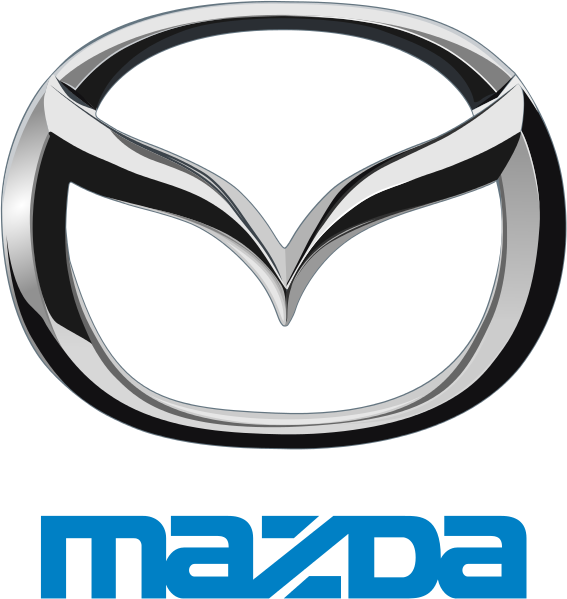| Home » Articles » All cars info |
Mazda Motor Corporation (マツダ株式会社 Matsuda Kabushiki-gaisha), commonly referred to just as Mazda, is a Japanese automaker based in Fuchū, Aki District, Hiroshima Prefecture, Japan. In 2007, Mazda produced almost 1.3 million vehicles for global sales, the majority of which (nearly 1 million) were produced in the company's Japanese plants, with the remainder coming from a variety of other plants worldwide. In 2011, Mazda was the fifteenth biggest automaker by production worldwide. Mazda began as the Toyo Cork Kogyo Co., Ltd, founded in Hiroshima, Japan in 1920. Toyo Cork Kogyo renamed itself to Toyo Kogyo Co., Ltd. in 1927. In the late 1920s the company had to be saved from bankruptcy by Hiroshima Saving Bank and other business leaders in Hiroshima.In 1931 Toyo Kogyo moved from manufacturing machine tools to vehicles with the introduction of the Mazda-Go autorickshaw. Toyo Kogyo produced weapons for the Japanese military throughout the Second World War, most notably the series 30 through 35 Type 99 rifle. The company formally adopted the Mazda name in 1984, though every automobile sold from the beginning bore that name. The Mazda R360 was introduced in 1960, followed by the Mazda Carol in 1962. Mazda's rotary success continued until the onset of the 1973 oil crisis. As American buyers (as well as those in other nations) quickly turned to vehicles with better fuel efficiency, the relatively thirsty rotary-powered models began to fall out of favor. Combined with being the least-efficient automaker in Japan (in terms of productivity), inability to adjust to excess inventory and over-reliance on the U.S. market, the company suffered a huge loss in 1975. An already heavily indebted Toyo Kogyo was on the verge of bankruptcy and was only saved through the intervention of Sumitomo keiretsu group, namely Sumitomo Bank, and the companies subcontractors and distributors. Fortunately, the company had not totally turned its back on piston engines, as it continued to produce a variety of four-cylinder models throughout the 1970s. The smaller Familia line in particular became very important to Mazda's worldwide sales after 1973, as did the somewhat larger Capella series. Mazda refocused its efforts and made the rotary engine a choice for the sporting motorist rather than a mainstream powerplant. Starting with the lightweight RX-7 in 1978 and continuing with the modern RX-8, Mazda has continued its dedication to this unique powerplant. This switch in focus also resulted in the development of another lightweight sports car, the piston-powered Mazda Roadster (perhaps better known by its worldwide names as the MX-5 or Miata), inspired by the concept 'jinba ittai'. Introduced in 1989 to worldwide acclaim, the Roadster has been widely credited with reviving the concept of the small sports car after its decline in the late 1970s. From 1979 to 2010, Mazda had a partnership with the Ford Motor Company, who acquired a 7% stake in 1979 and by 1996, owned 33.3% of Mazda. Under the administration of Alan Mulally, Ford gradually divested its stake in Mazda from 2008 to 2010, with Ford currently holding 2.1% of Mazda stock in 2014 and severing most production as well as development ties.Amid the world financial crisis in the fall of 2008, reports emerged that Ford was contemplating a sale of its stake in Mazda as a way of streamlining its asset base. BusinessWeek explained the alliance between Ford and Mazda has been a very successful one, with Mazda saving perhaps $90 million a year in development costs and Ford "several times" that, and that a sale of its stake in Mazda would be a desperate measure. On November 18, 2008, Ford announced that it would sell a 20% stake in Mazda, reducing its stake to 13.4% thus surrendering control of the company, which it held since 1996. The following day, Mazda announced that, as part of the deal, it was buying back 6.8% of its shares from Ford for about US$185 million while the rest would be acquired by business partners of the company. It was also reported that Hisakazu Imaki would be stepping down as chief executive, to be replaced by Takashi Yamanouchi. On November 18, 2010, Ford reduced its stake further to 3%, citing the reduction of ownership would allow greater flexibility to pursue growth in emerging markets, and Sumitomo Mitsui Financial Group was believed to become its largest shareholder. Ford and Mazda remain strategic partners through joint ventures and exchanges of technological information. | |
| Category: All cars info | Added by: 9999 (16.04.2016) | |
| Views: 300 |
| Total comments: 0 | |
